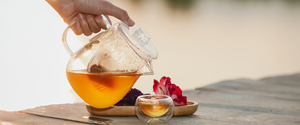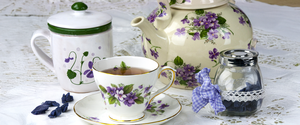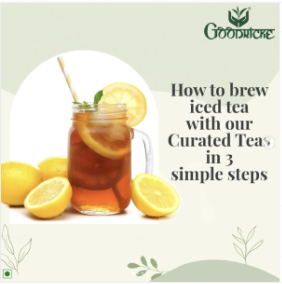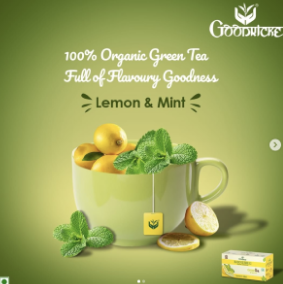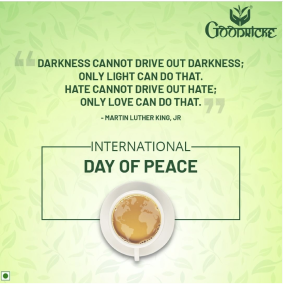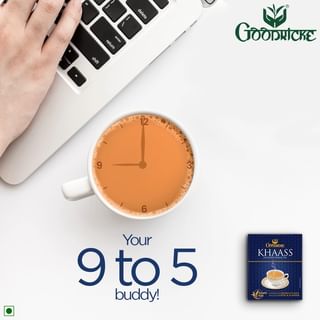India is home to some of the finest teas in the world, and two regions that stand out in this regard are Dooars and Darjeeling. Both areas, nestled in the foothills of the Himalayas, produce teas that are renowned for their unique flavours, aromas, and textures. However, there are several distinctions that make Dooars tea and Darjeeling tea different from each other. Whether you're a tea enthusiast or a casual sipper, understanding these differences will not only enhance your appreciation of each but will also help you choose the best tea to suit your taste.
A Tale of Two Teas: Darjeeling’s Elegance vs. Dooars’ Boldness
The first significant distinction between Dooars tea and Darjeeling tea lies in their geographical origins. Dooars tea gardens are located in the plains of the Dooars region, which stretches across the foothills of the eastern Himalayas, specifically in West Bengal and Assam. The region is known for its tropical climate, fertile soil, and high levels of rainfall, making it ideal for growing robust, full-bodied teas. In contrast, Darjeeling tea comes from the higher altitudes of the Darjeeling district, where the cooler, more temperate climate and misty conditions give rise to teas with delicate, complex flavours.
The difference in elevation plays a crucial role in the types of teas produced. While Dooars tea tends to have a strong, malty flavour with a rich, dark liquor, Darjeeling tea is often referred to as the "Champagne of Teas" due to its light, floral notes and muscatel undertones. These contrasting terroirs result in two distinct types of tea, each suited to different preferences.
One of the most noticeable differences between Dooars and Darjeeling teas is their flavour and aroma. Dooars tea is known for its bold, brisk taste. The lower altitude, warmer climate, and fertile plains allow the tea plants to grow quickly, resulting in a more robust flavour. This tea is often preferred by those who enjoy a strong cup of tea with a bright liquor and a slightly astringent aftertaste. The tannins present in Dooars tea contribute to its fuller body, rich taste & strong aroma making it perfect for blending with milk and sugar, a popular way of drinking tea in India.
On the other hand, Darjeeling tea is lighter and more fragrant. It is characterized by its floral and fruity notes, with some varieties even displaying hints of spice or citrus. Darjeeling teas are usually consumed without milk to fully appreciate their delicate, complex flavours. The second flush, which occurs during the summer, is particularly prized for its muscatel flavour, a sweet, grapey note that is unique to Darjeeling tea.
Another important factor that differentiates Dooars tea from Darjeeling tea is the growing season. Darjeeling tea is harvested in four distinct flushes—first flush (spring), second flush (summer), monsoon flush (autumn), and autumnal flush (late autumn). Each flush produces a tea with unique flavour characteristics. The first flush is known for its light, delicate flavour, while the second flush, harvested in summer, is richer and more robust, often with the coveted muscatel note.
In contrast, Dooars tea gardens typically harvest the tea throughout the year, with the main harvest season being from March to November. The consistent growing conditions in the Dooars region mean that the flavour of the tea remains fairly uniform throughout the year, offering a reliable, strong cup each time.
Goodricke: The One-Stop Destination for Darjeeling and Dooars Teas
When it comes to choosing between Dooars tea and Darjeeling tea, Goodricke offers a wide range of premium options from both regions, ensuring that you can enjoy the best quality, no matter what your preference is. Goodricke’s Dooars tea collection includes the Leesh River CTC and Goodricke Premium CTC leaf, both known for their robust, full-bodied flavours. These teas are perfect for those who enjoy a strong, brisk cup, especially when paired with milk.
For Darjeeling tea lovers, Goodricke has an exquisite selection that includes Badamtam Darjeeling tea, Thurbo, Roasted, Castleton Vintage, Castleton Muscatel, and Barnesbeg. Each of these Darjeeling teas offers a distinct flavour profile, ranging from light and floral to rich and muscatel, encouraging you to explore the rich diversity that Darjeeling tea has to offer. Whether you’re a fan of the strong, malty flavours of Dooars tea or the delicate, complex notes of Darjeeling tea, Goodricke has something for every tea lover.
The Takeaway
In summary, while Dooars tea and Darjeeling tea both originate from the foothills of the Himalayas, they differ in several key areas, including geography, flavour profile, and growing season. Dooars tea offers a robust, full-bodied experience, ideal for those who enjoy a strong, malty brew, while Darjeeling tea provides a more delicate, nuanced flavour, with floral and muscatel notes that appeal to connoisseurs.
With a varied range of superior teas like Leesh River CTC, Castleton Premium Muscatel, and Badamtam Organic Darjeeling tea, Goodricke invites you to indulge in single origin excellence & finest craftsmanship.





